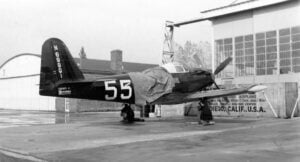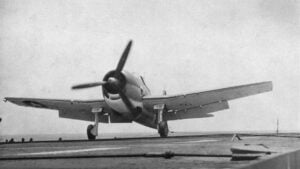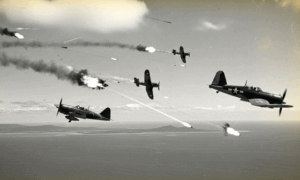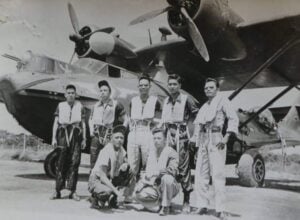9 Unusual Gooney Birds That Weren’t Utilized in WWII

World of Warbirds / YouTube
During World War II, many strange and experimental aircraft were designed and tested by various countries. These planes were often too unusual or impractical to be used in combat. Despite their unique designs and innovative ideas, they were not put into production for the war. Let’s take a look at nine of these peculiar aircraft that never saw action during World War II.
Blohm and Voss Bv-141

One unusual aircraft was the German Blohm and Voss Bv-141, which had a very odd shape. It was supposed to be a tactical reconnaissance plane, which means it was meant to spy on enemies. The plane had a crew of three, who sat in a pod on the right wing. This design gave them a great view of everything except right in front of the engine. A famous German flying ace liked the plane, but it was turned down in 1940 because its engine was too weak. When the engine was finally upgraded, the German air force had already chosen another plane.
Bell Aircuda YFM-1

The idea of putting parts of the crew on the wings was not unique to Germany. The Bell Aircuda YFM-1 was an American plane designed to shoot down enemy bombers. It had two forward-facing gun turrets on its wings, each with a powerful 37mm cannon. To make space for the turrets, the engines were placed facing backward. The U.S. Army tried out 13 of these planes in 1940, but they had many problems. The plane was too slow, making it hard to catch bombers. Its backward engines also made it difficult to fly and dangerous to bail out of. Eventually, all the planes were scrapped.
Bachem Ba-349 Natter

The Bachem Ba-349 Natter was another German plane that was more like a flying weapon than an airplane. It was a rocket-powered interceptor meant to shoot down Allied bombers with a barrage of unguided rockets. The Natter could launch straight up from any flat surface, making it very flexible. Its powerful rocket engine could take it 30,000 feet into the air in under a minute. Once it reached that height, the pilot would shoot down enemies and then glide back to the ground. Though both the German air force and SS wanted to use it, the war ended before it could be deployed. Only 36 were built, and none saw action.
McDonnell XP-67 Moonbat

The McDonnell XP-67 Moonbat was an American plane designed with smooth edges for better speed and agility. This twin-engine interceptor looked fast and futuristic, but it didn’t perform well. Its top speed was 400 mph, which was considered too slow, and it was hard to control. Even though its six 37mm cannons would have made it a powerful ground-attack plane, it never went into production. The only prototype crashed after just nine months of testing.
Vought V-173 Flying Pancake

The Vought V-173 Flying Pancake was an American plane that looked more like a UFO than an aircraft. It had two engines and was designed to take off and land in very small spaces, which was confirmed by famous pilot Charles Lindbergh. Despite its good handling at low speeds, it never moved beyond the demonstration phase. Only one was ever built.
P-82 Twin Mustang

During the war, some designers played with the idea of twin-fuselage planes. North American tried to extend the range of its famous P-51 Mustang by joining two of them together. This new plane, called the P-82 Twin Mustang, could fly from Hawaii to Manhattan without needing to refuel. Although the war ended before more were built, it went into limited production in the late 1940s. Germany also tried a similar idea with its Messerschmitt Bf-109Z, which had two joined fighters with the cockpit in the left fuselage.
British Miles M.39 Libellula

The British Miles M.39 Libellula was a strange-looking bomber with swept wings and two engines. It was designed to carry a 2,000-pound payload over 1,500 miles and had impressive handling. Despite this, the Royal Air Force didn’t want it, and only one prototype was built.
Curtis Wright XP-55 Ascender

The American Curtis Wright XP-55 Ascender was another plane with swept wings, but its main feature was a rear-facing propeller. It also had strong cannons and machine guns up front. The military wasn’t impressed with its design or performance, so it was never used.
Vultee XP-54

The Vultee XP-54 was an odd-looking single-engine plane with a twin-boom design. Its nose could move up and down, making it easier to shoot at targets on the ground. This strange feature earned it the nickname “Swoose Goose.” However, with a top speed of only 380 mph, the War Department decided against it.




















